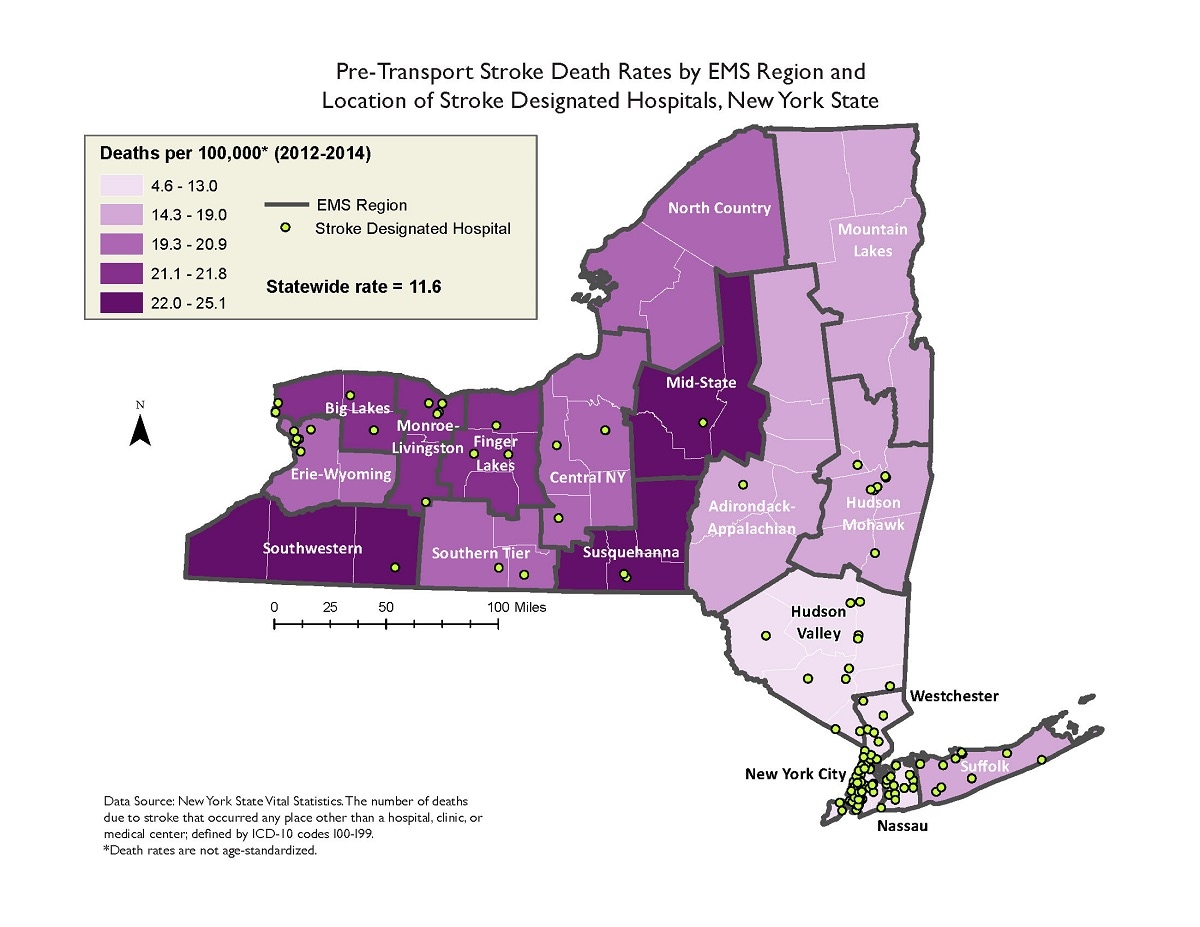Map Details: Pre-Transport Stroke Death Rates by EMS Region and Location of Stroke Designated Hospitals, New York State
Impact Statement
A goal of the New York State Coverdell Program is to establish partnerships with the emergency medical system (EMS) community to increase prenotification of stroke patients being transported to designated stroke centers and decrease time to appropriate patient care. The map demonstrates pretransport stroke mortality variation across and within the EMS regions of New York State, as well as the locations of stroke designated hospitals in the State.

Major Findings
This map demonstrates pretransport stroke mortality variations across the EMS regions of the state. The concentrations of EMS regions with the highest pretransport stroke death rates are located primarily in the central and western regions of the state, while the lowest pretransport stroke death rates are predominantly located in the EMS regions closer to New York City and the eastern half of the state. The crude pretransport stroke death rates range from 4.6 to 25.1 per 100,000 residents among all the regions in the state, while the average crude pretransport stroke death rate was 11.6 per 100,000 deaths during 2012–2014.
How the map will be used, or has been used
This map will aid EMS and hospital partners in planning and decision making to optimize regional collaboration of prehospital stroke care and assist stroke designated hospitals to inform community education efforts.